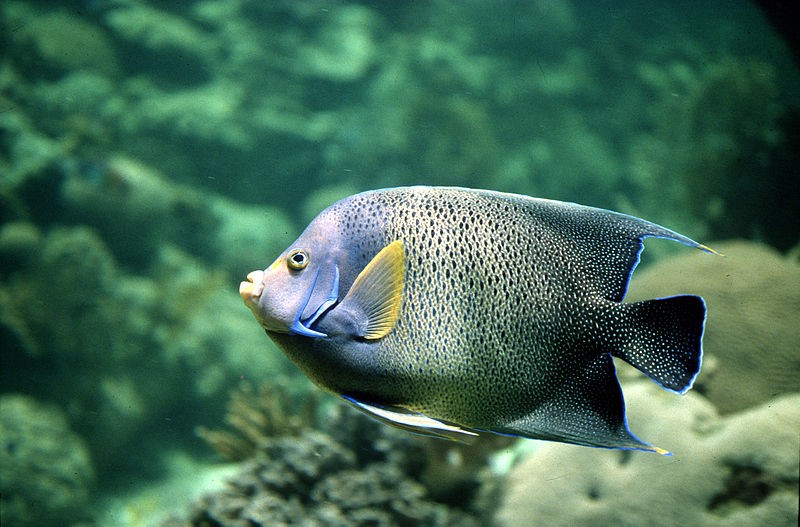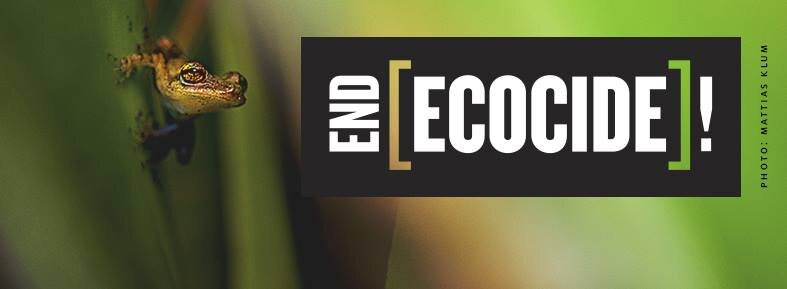As we are seeing the UN Decade of Biodiversity coming to a close this year, to say that we haven’t fulfilled its promises would be an understatement. If anything, we are beginning to understand the extent to which the Earths’ living systems are falling apart. One million species might go extinct in the near future, according to a report from the Intergovernmental Panel on Biodiversity and Ecosystem Services (IPBES). That is more than half of the species described by science. Current negative trends in biodiversity and ecosystems are projected to undermine progress towards 80 per cent of the assessed targets of the Sustainable Development Goals related to poverty, hunger, health, sustainable consumption and production, water, cities, climate, oceans and land.
Well, guess what? We depend on living systems for our wellbeing. This is not news, but ancient knowledge. Indigenous peoples know themselves as parts of nature. As Onondaga spiritual leader Oren Lyons puts it: ”The environment isn’t over here. The environment isn’t over there. You are the environment.”
Following from the stark conclusions of its Global Assessment report, IPBES is calling for transformative change. “Through ‘transformative change’, nature can still be conserved, restored and used sustainably — this is also key to meeting most other global goals. By transformative change, we mean a fundamental, system-wide reorganization across technological, economic and social factors, including paradigms, goals and values” says IPBES Chair, Sir Robert Watson.
2020 has been deemed a ”super-year” for nature, as the post-2020 global biodiversity framework, similar to a Paris Agreement for Nature, is being laid out within the Convention for Biological Diversity (due to the corona crisis the adoption will be post-poned to 2021). CBD is the most important international agreement for nature, and it is also calling for transformation. The frameworks aims to ”support transformational change towards realizing the 2050 vision of living in harmony with nature.” So, how do you catalyse transformative change? Transformation, from what, to what?
Transformation means system change. To change the system in any meaningful way, we need to look at the assumptions the system is built on. The paradigm. The most powerful assumptions of the western culture has to do with the human-nature relationship. This culture is largely built upon the assumption that humans are separate from nature and has the right, or even duty, to control and dominate it. Christianity and science, the legitimising powers of the western society, have been in agreement on this fundamental tenet. It has shaped our institutions, methods, laws, and society as a whole.
As most cultural assumptions it is invisible. Like fish, who dont know they are swimming in water, we don´t know that we are totally antropocentric. The frameworks aiming at ”transformative change” for conserving biodiversity is still assuming that people are governing nature and need to preserve it for the goods and services it provides. Oren Lyons again: “I do not see a delegation for the four-footed. I see no seat for the eagles.” Actually, there can be no seat for the eagles, as according to the western worldview, they have no voice. They four-footed ones, the trees, the fish are viewed as objects, resources, commodities. They are right-less.

Photo: Robert Kerton, CSIRO
The transformation needed in our relationship with the more-than-human world is the one Oren Lyons is talking about. To understand that we are part of life, just like the worms, the oak trees and the corona virus are part of life. That just like there are human needs, so do all living beings have needs and interests. This means a transformation of the human being in the world. But, as Oren Lyons asks: “We wonder, how do you instruct seven billion people as to the relationship to the Earth? Because unless they understand that and relate the way they should be, future is pretty dim for the human species.”
Actually, there is a concept that might support this transformation in relationship. Acknowledging that not just humans, but all living things have rights, which can be upheld by the law, Rights of Nature is quietly being developed on different levels worldwide. The constitution of Ecuador is recognising the Rights of Nature, as is the Environmental Act of Uganda. Local communities in the US are developing Rights of Nature ordinances. In Colombia (host of World Environment Day this year) the Constitutional Court as well as regional courts have assigned several rivers status as legal subjects. The Supreme Court of Colombia in 2018 judged in favour of youth suing the state for not respecting their rights to a healthy environment, life, health, food, and water due to climate change caused by deforestation. In order to protect the forest, the Supreme Court recognized the Colombian Amazon as an entity subject of rights. This means that the State has a duty to protect, conserve, maintain, and restore the forest.
2020 is not just a super-year for nature, it also marks the tenth anniversary of the Universal Declaration for the Rights of Mother Earth. The Declaration was first presented at the World People’s Conference on Climate Change and the Rights of Mother Earth in Cochabamba, Bolivia, which in 2010 gathered more than 35,000 people from over 100 countries. In 2018, the Sami Parliament of Sweden decided to support the Declaration. The Sami, like many other indigenous peoples, have everyday experiences of how climate change hits directly. Their traditional ways of life is hard-pressed between climate change and exploitative mining projects and forestry.

Marie Persson Njajta, Stefan Mikaelsson and Mona Persson with the decision from the Sami Parliament to endorse the Universal Declaration for the Rights of Mother Earth.
“This is a very important decision”, says Marie Persson Njajta, one of the proposers. “We wrote it for our children and the possibilities for coming generations to live a good life. We believe a paradigm shift is needed towards a view where humans understand ourselves as part of nature, which is the way indigenous people relate to nature. We, the Sami people, believe that we belong to the land, not the other way around. Today we see how a colonial perspective, exploitation, and climate change threaten our culture. And it is not just us; it is a global issue. The decision to support the Universal Declaration for the Rights of Mother Earth is a statement against the shortsightedness of governmental policy and the failing view that corporations have rights while nature does not.”
The idea of Rights of Nature often meets with the worry that human needs will be compromised. This is a sign of how entrenched we are in the view of nature as something separate from us. Basic human needs like water, food and shelter are of course always totally dependent on the living world. As the former UN Special rapporteur on human rights and the environment John Knox observed: ”the loss of biodiversity undermines the enjoyment of a wide range of human rights, including rights to life, health, food and water.” Without healthy ecosystems, it is not possible to uphold human rights. Without healthy ecosystems, it is not possible to reach the Sustainable Development Goals. When we know that the worlds’ ecosystems are falling apart, it is time to balance the Declaration of Human Rights with a Declaration of Rights of Nature. This would be truly transformative policy, and it could be part of the Convention of Biological Diversity.
 Pella Thiel is a Biologist, permaculturist and small-scale farmer. Co-founder of Transition Sweden, chairperson of End Ecocide Sweden, coordinator of Rights of Nature Sweden. This piece has been re-posted with the author’s permission.
Pella Thiel is a Biologist, permaculturist and small-scale farmer. Co-founder of Transition Sweden, chairperson of End Ecocide Sweden, coordinator of Rights of Nature Sweden. This piece has been re-posted with the author’s permission.

